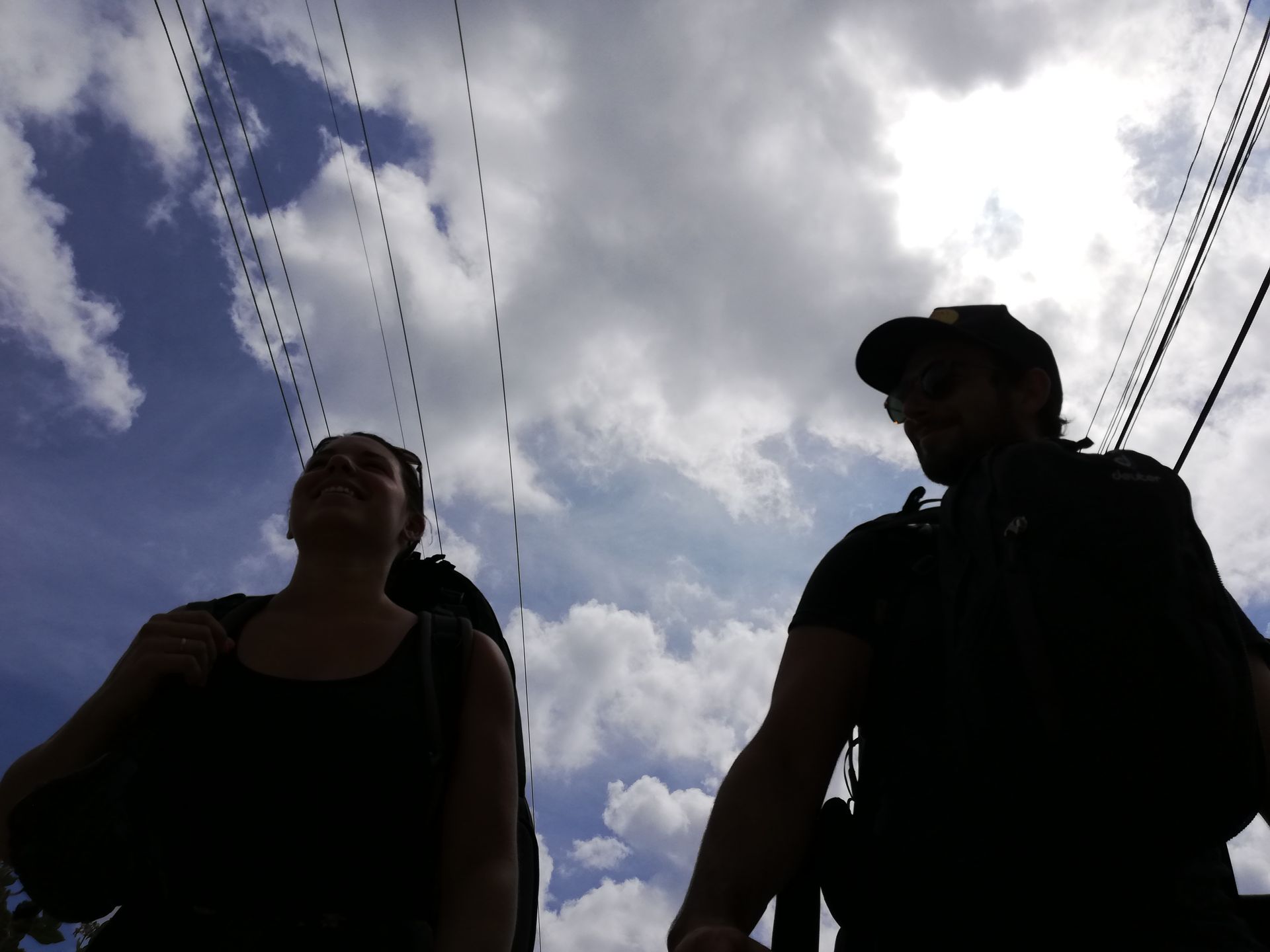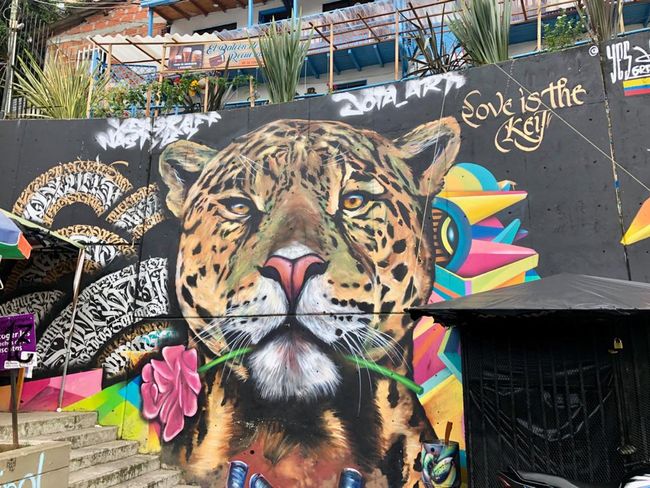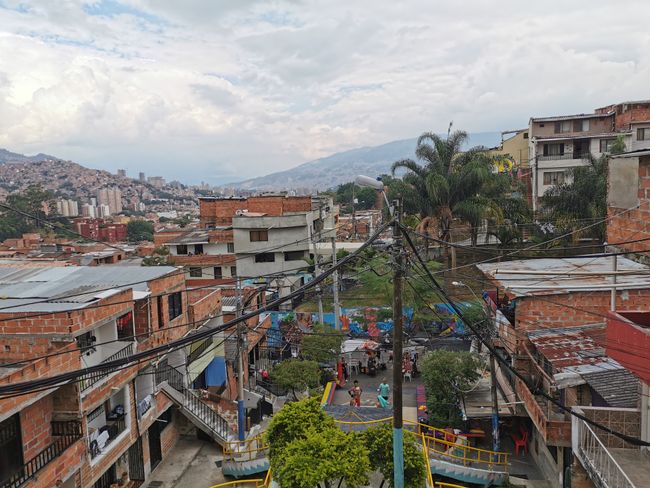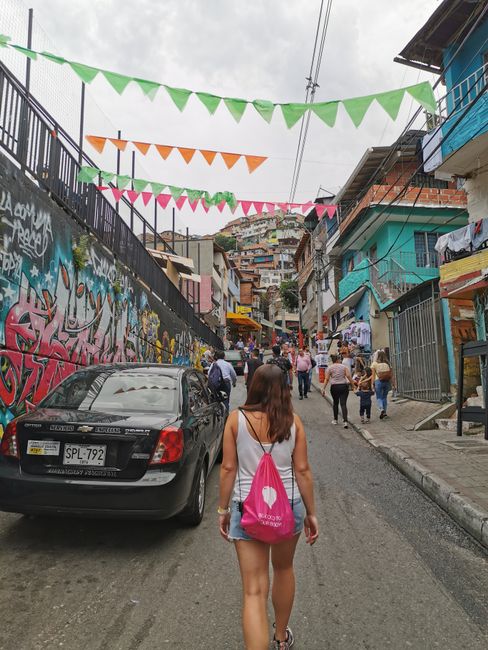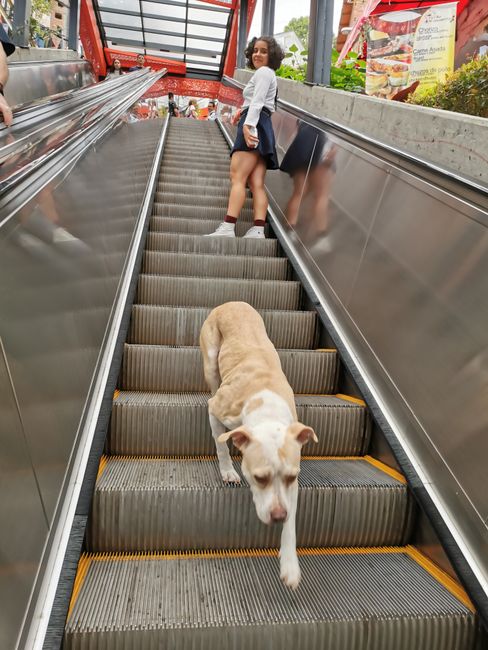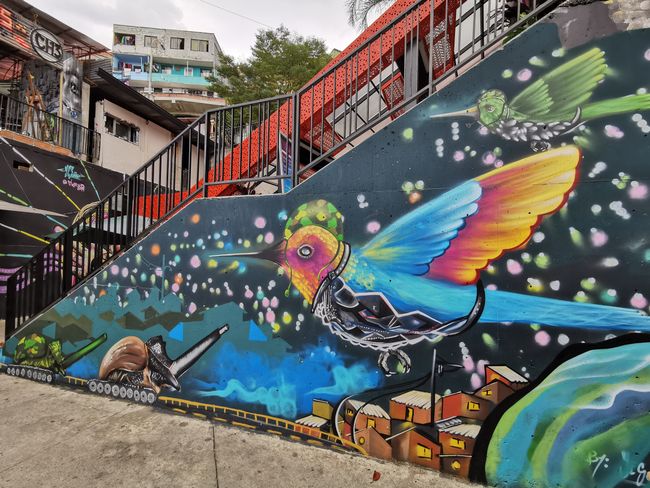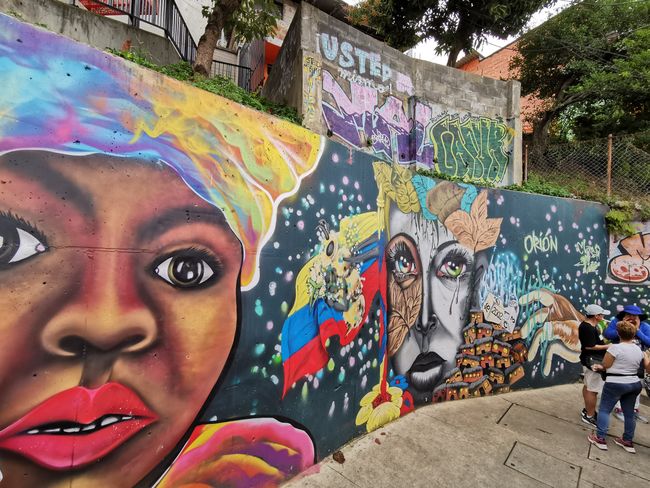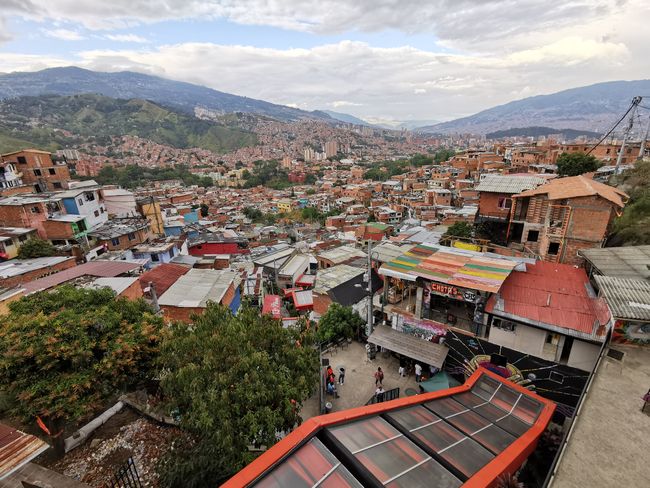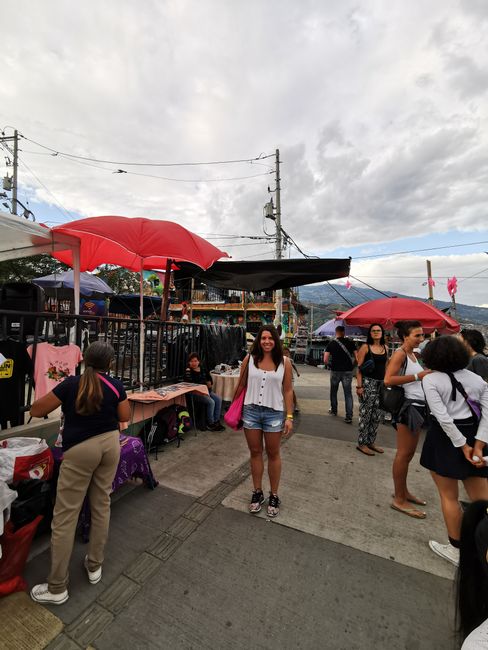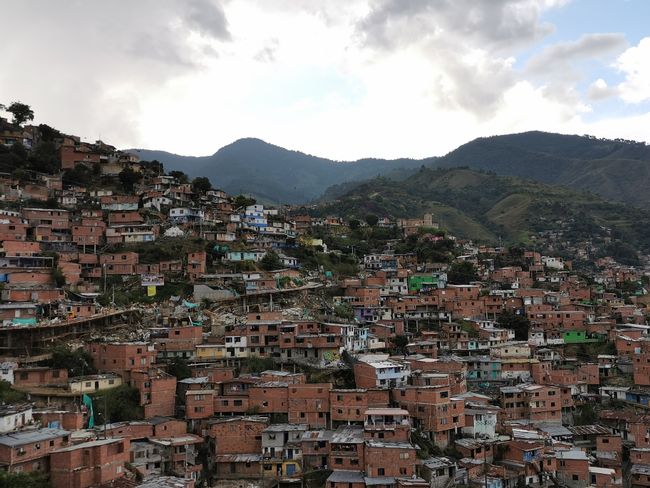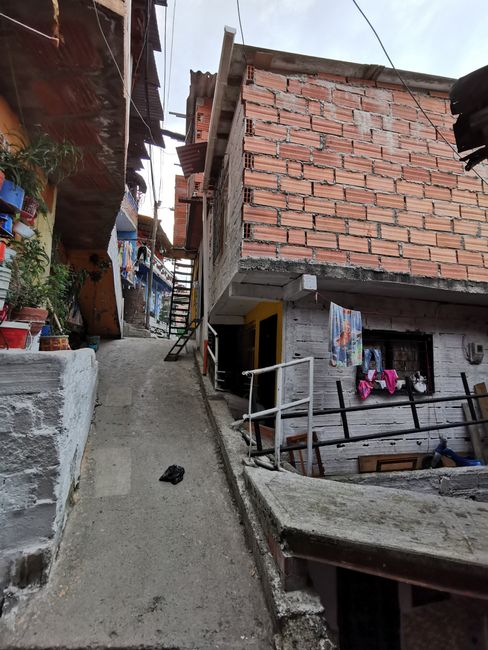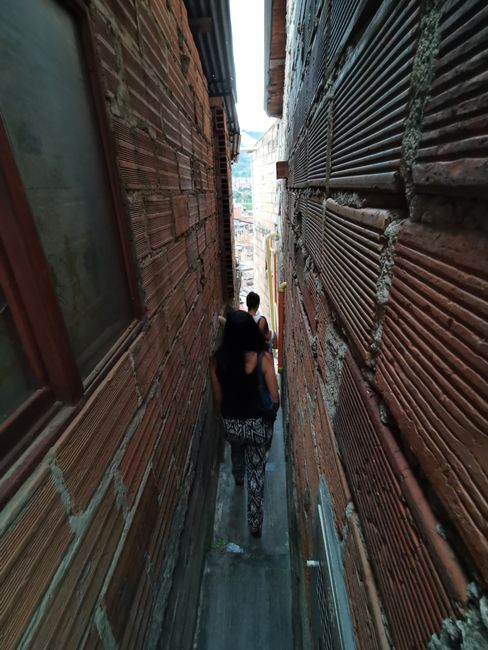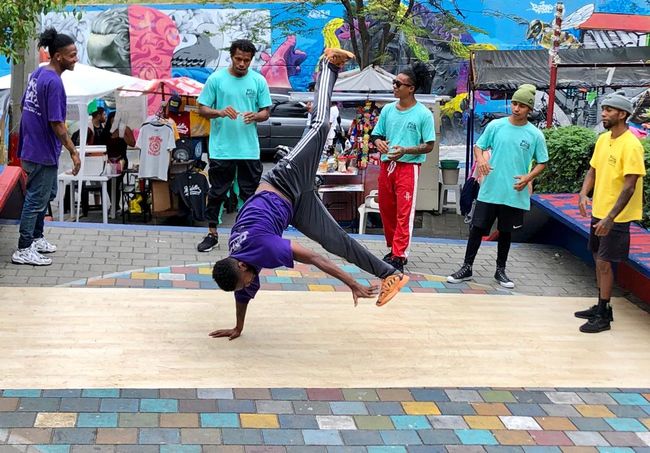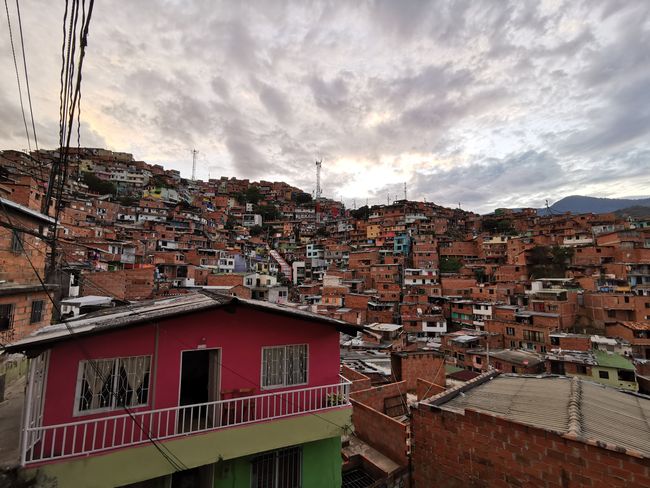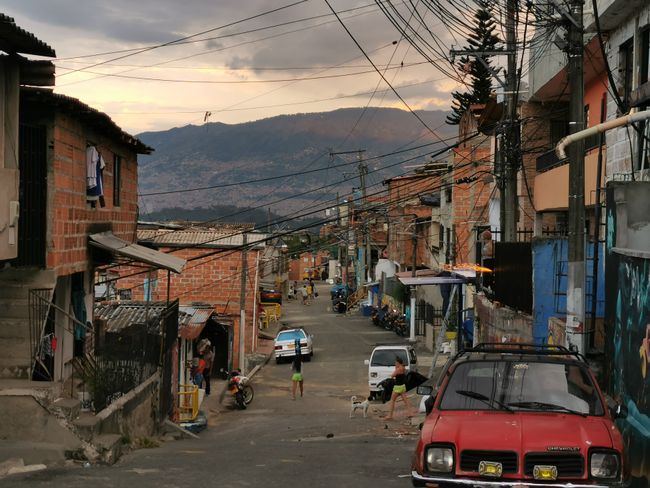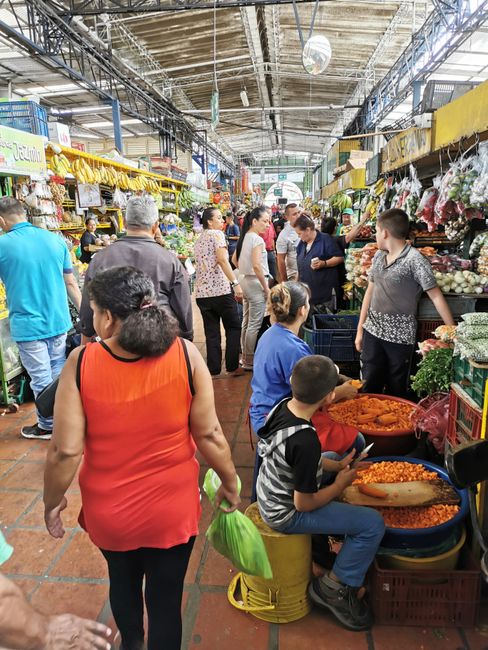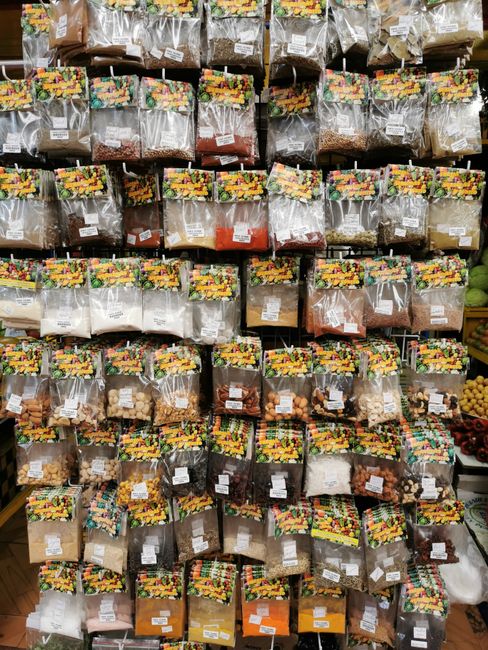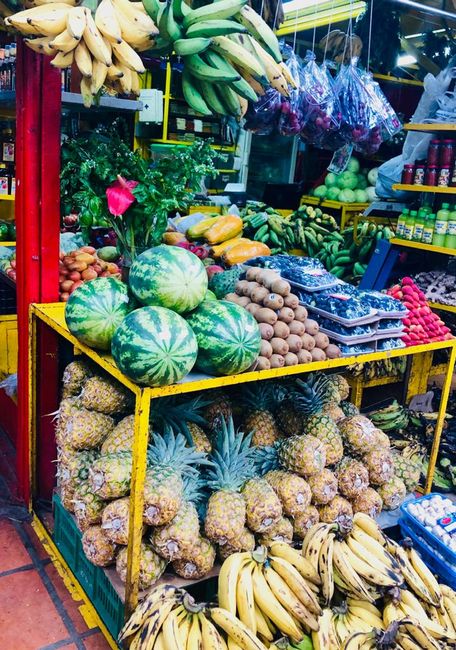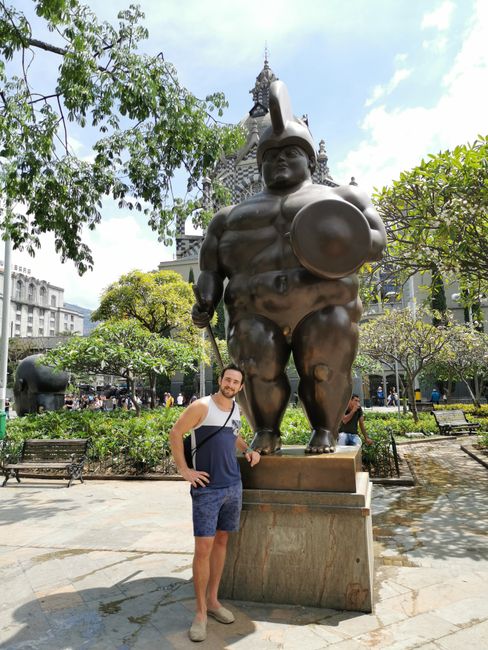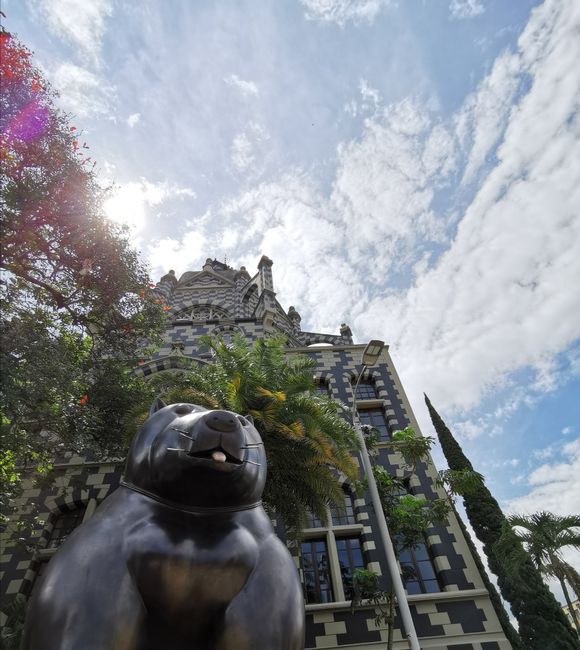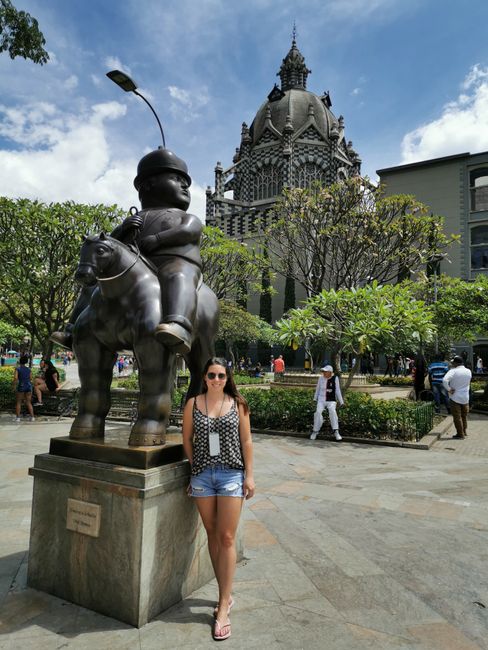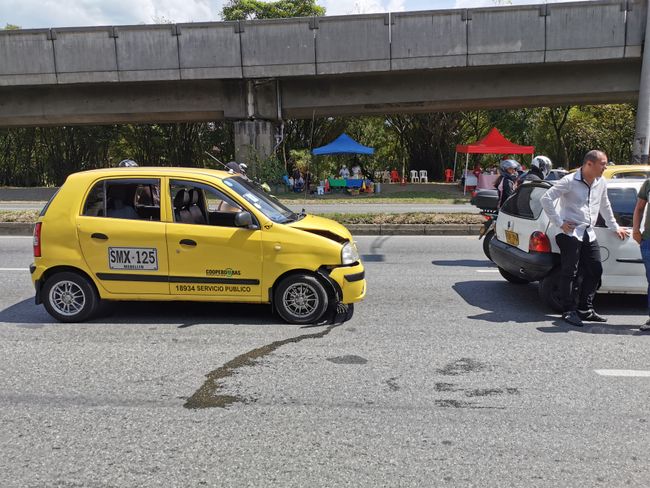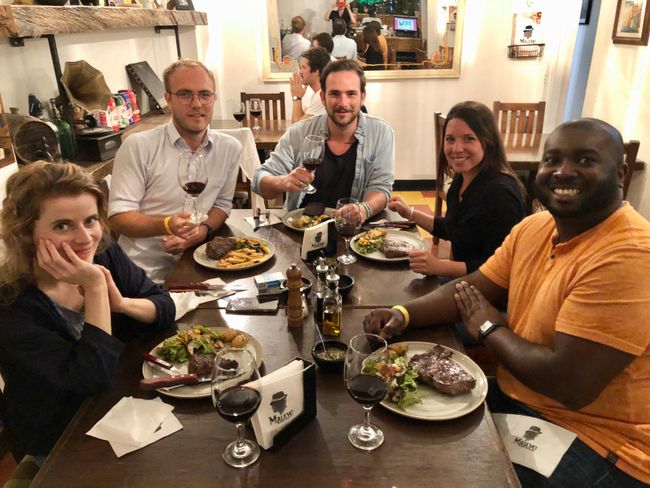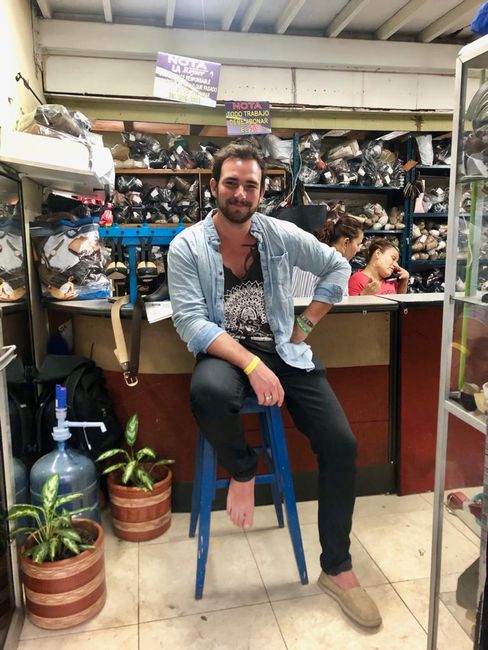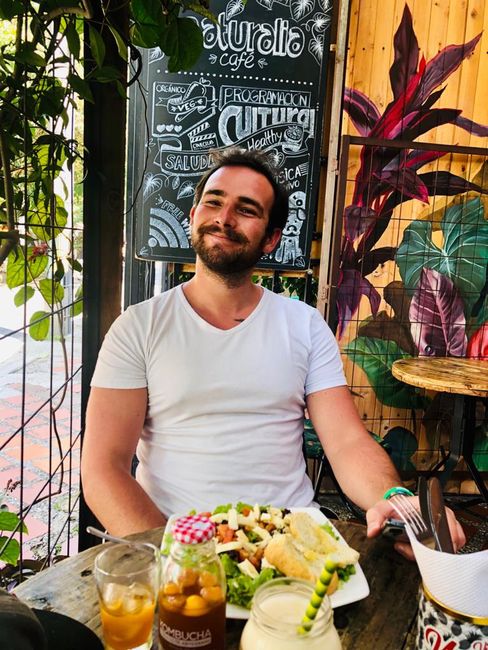Medellín
ꯐꯣꯉꯈ꯭ꯔꯦ꯫: 09.02.2020
ꯅꯤꯎꯖꯂꯦꯇꯔꯗꯥ ꯁꯕꯁ꯭ꯛꯔꯥꯏꯕ ꯇꯧꯕꯤꯌꯨ꯫
Because of its bloody past, Medellín has gained a sad notoriety for having the highest murder rate in the world. Despite, or perhaps precisely because of, its ugly history, the city has developed incredibly fast in recent years. It has long been on our to-visit list and we were very excited to finally arrive. As a first shock, we were hit by the heat - and we were not appropriately dressed in shorts, tank tops, and flip-flops. We didn't expect a climate other than the Caribbean. Fortunately, the highly recommended Rango hotel in the backpacker district of El Poblado turned out to be a highlight, and thanks to our connections, we got the suite with a Jacuzzi (Thanks, Chris). Luckily, the weather was good the next day and we were able to change back into shorts and tank tops. We only needed a light jacket in the evening.
With Daniela, who grew up in Communa 13, we visited her neighborhood, which not too long ago was the most dangerous neighborhood in Medellín. With a lot of emotion, she told us about the civil war in Colombia between the security forces, the paramilitaries, and the FARC guerrillas, and the drug domination of Pablo Escobar, which hit Communa 13 particularly hard. Because it is located at the far west of the city on the mountain and thus has access to the route to the ports on the Pacific coast, everything that was smuggled went through there. Communa 13 was a war zone for a long time, with various powers fighting for control, and until 2002, it was still occupied by the FARC, making it the longest-held district in Medellín. Then, in 2002, the state carried out Operation Orión and "cleaned" the area from the guerrilla, completely destroying everything in its path. The military operation killed dozens of innocent people, hundreds disappeared, and they are believed to be buried in the garbage dump "La Escombrera". Recently, mass graves were discovered there, where only a few bodies could be identified, leaving 10,000 unidentified. All of this has been documented by the residents in graffiti. Daniela told us many other facts that are hard for us to comprehend about the neighborhood, Medellín, and Colombia, and gave us an insight into the still very complex situation. However, a lot has changed. In 2013, Medellín was even named the most innovative city in the world. In the past year, parks and schools have been built in the outskirts, cable cars and escalators have been built in Communa 13 to open up and integrate the poorest areas of society. A lot of transformation has taken place. However, large parts of Communa 13 are still controlled by smaller gangs. Although they do not have the same power as the Medellín Cartel did back then, they still deal drugs and extort businesses for protection money. Ice cream vendors, taxi drivers, and even our tour guides pay for peace. Those who do not pay are expelled from the neighborhood, otherwise they will be killed. The gangs no longer commit obvious murders, they simply make people disappear, which in turn skews the decrease in the murder statistics. The gangs operate more discreetly now, but there is still an abundance of cocaine in Colombia. We could tell many more incredible stories, but in any case, the tour was one of the best we have ever done and had a long-lasting impact.
After letting everything sink in a bit during a nap in front of the hostel, we met Trevor from Kentucky. He wasn't supposed to be the last drink, but rather another encounter that we didn't want to miss. We spent a long night with him and other guests, enjoying the hostel life to the fullest. Because there is so much to explore in Medellín, we extended our stay for two more nights and moved to the Laureles neighborhood. This neighborhood is more authentic than El Poblado. Laureles reminded us a bit of the neighborhood in Berlin, at least on Saturday night on the main street. Clubs and bars line both sides of Carrera 70, competing with each other in terms of music volume, and it's happy hour around the clock. We promised ourselves a quiet day when we checked off the remaining sights. A leisurely stroll through the parks... and eating some fruit... NOT in Medellín. On our way from the market to Plaza de Botero - only 3 blocks away - we suddenly found ourselves in a street where anarchy seemed to reign. We had never seen anything comparable. Hundreds of people, half-dressed, smoking crack and consuming other drugs. The people were wandering around like dead flies on their trips, garbage everywhere, and the street smelled like a waste dump. We know we shouldn't walk through desolate streets, but this was almost around the corner from the place to be. We entered as quickly as we could and left just as quickly, admiring Botero's artwork and wondering if what had just happened had really happened. The contrast was surreal. We decided to take a taxi instead - we are learning. However, it turned out that this is not much safer either. While we were wondering about the driving style of the Colombians, we suddenly ended up in a crash and pressed our noses against the front seat. We were lucky to escape this with just a scare. The driver then demanded 8,000 pesos from us in the middle of the highway.
Of course, we also went out and partied a bit. But compared to everything else, this was really in the background. We found Medellín to be an incredibly interesting city with admirable people who are striving to use the lessons of our terrible past for a better future.
ꯅꯤꯎꯖꯂꯦꯇꯔꯗꯥ ꯁꯕꯁ꯭ꯛꯔꯥꯏꯕ ꯇꯧꯕꯤꯌꯨ꯫
ꯄꯥꯎꯈꯨꯝ (1)
Fredy
Wild!! GUK und witerhin viil tolli Erläbnis. 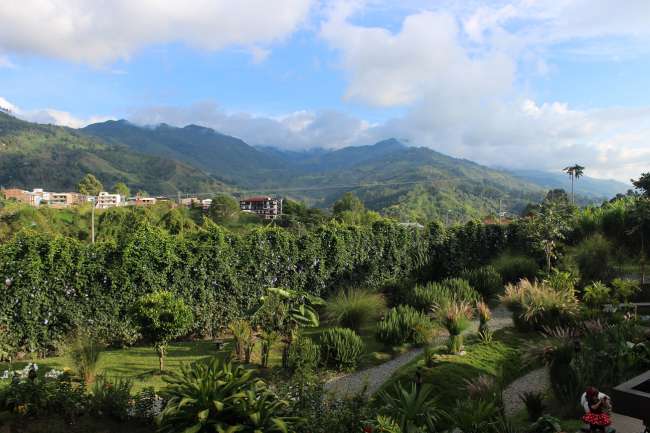
ꯆꯠꯊꯣꯛ-ꯆꯠꯁꯤꯅꯒꯤ ꯔꯤꯄꯣꯔꯇꯁꯤꯡ ꯀꯣꯂꯝꯕꯤꯌꯥꯗꯥ ꯂꯩꯕꯥ ꯌꯨ.ꯑꯦꯁ
